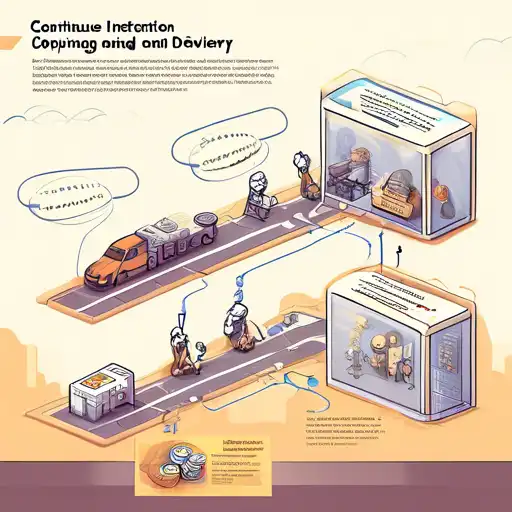What is Continuous Integration and Delivery?
Continuous Integration (CI) and Continuous Delivery (CD) are pivotal practices in modern software development, aimed at improving the efficiency and reliability of software releases. By automating the integration and delivery processes, teams can achieve faster development cycles, higher quality products, and more satisfied customers.
The Core Principles of CI/CD
At its heart, CI/CD is about automating the software release process. Continuous Integration involves automatically merging all developers' working copies to a shared mainline several times a day. Continuous Delivery extends this by ensuring that the software can be released to production at any time, with the push of a button.
Benefits of Implementing CI/CD
- Faster Release Rate: Automating the build and test process means that new features and fixes can be delivered to users more quickly.
- Improved Code Quality: Early detection of integration issues leads to fewer bugs in production.
- Reduced Deployment Risk: Smaller, more frequent updates reduce the complexity of deployments, making them less risky.
- Enhanced Team Productivity: Automation frees up developers from manual tasks, allowing them to focus on writing code.
How to Get Started with CI/CD
Implementing CI/CD requires a cultural shift towards automation and continuous improvement. Start by integrating a CI server like Jenkins, CircleCI, or GitHub Actions into your development workflow. Next, automate your testing to ensure that every change is verified before it's merged. Finally, streamline your deployment process to enable continuous delivery to production.
Best Practices for CI/CD
- Maintain a Single Source Repository: All code should be stored in a version-controlled repository accessible to the entire team.
- Automate the Build Process: Every commit should trigger an automated build and test sequence.
- Make Your Build Self-Testing: Include automated tests in your build process to catch issues early.
- Keep the Build Fast: Optimize your build and test processes to complete in minutes, not hours.
Challenges and Solutions in CI/CD
While CI/CD offers numerous benefits, teams may face challenges such as resistance to change, integration complexities, and maintaining test coverage. Overcoming these requires clear communication, incremental implementation, and a focus on automation and quality.
For more insights into optimizing your development workflow, explore our guide on Agile Development Practices.
Conclusion
Continuous Integration and Delivery are more than just technical practices; they represent a shift towards more agile, efficient, and quality-focused software development. By embracing CI/CD, teams can deliver better software faster, with less risk and more confidence.
